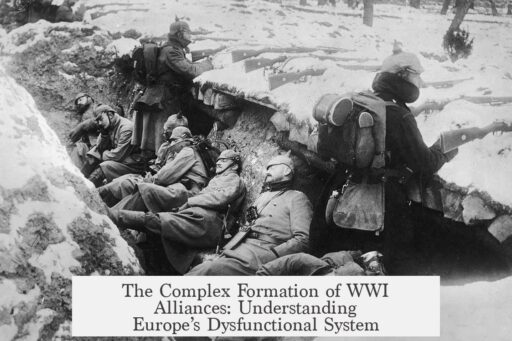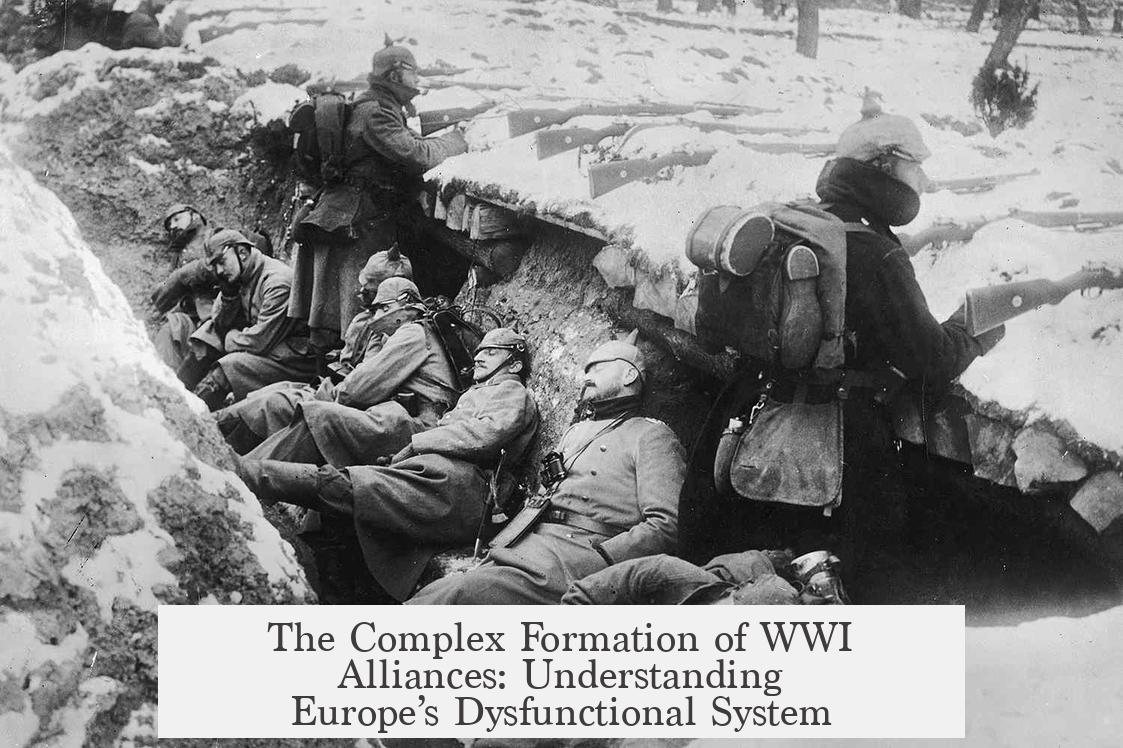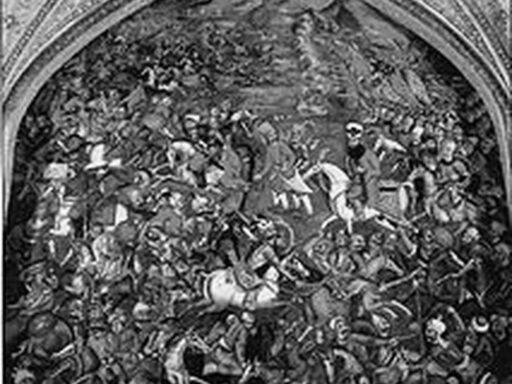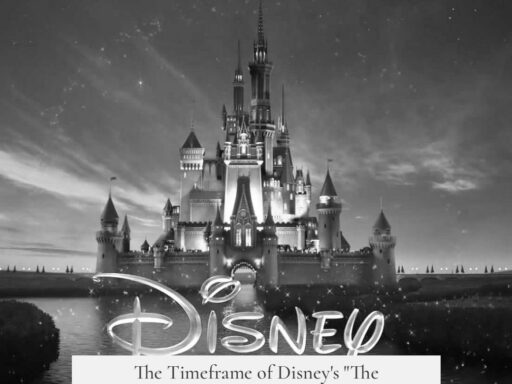The alliance system in World War I formed from pragmatic political strategies rather than shared ideals or lasting friendships, leading to a web of partnerships that appear dysfunctional and strange. These alliances arose to balance rapidly shifting powers in Europe and prevent any one state from dominating the continent.
The origins lie in the 19th century, rooted in the aftermath of the Napoleonic Wars. The Congress of Vienna (1814–1815) sought to restore European stability by establishing a balance of power among great powers like Austria, Russia, Prussia, and Britain. This balance aimed to prevent a single power from dominating, as France once had under Napoleon.
This political order redrew boundaries, creating new states and spheres of influence. For example, the German Confederation and expanded Prussia emerged, Russia gained the Duchy of Warsaw, and northern Italy remained under Austrian dominance. These arrangements set the stage for competing national interests and a complex political landscape.
The 1848 revolutions threatened this fragile order. Revolts inspired by ideas from the French Revolution swept through Europe, destabilizing monarchies and challenging old alliances. Although many revolutions failed and traditional powers reasserted control, these upheavals accelerated changes in society and nationalism, unsettling the previous order.
The Crimean War (1853–1856) further illustrates how alliances were temporary and issue-driven. Britain and France allied against Russia, not to defend the Ottoman Empire earnestly, but to check Russian expansion. This reactive coalition was a typical example of powers joining forces to maintain the status quo rather than out of permanent friendship.
The dramatic unifications of Italy and Germany in the 1860s disrupted the balance. Italy unified under Sardinia-Piedmont with French support after defeating Austria in a series of wars. Germany unified under Prussia after a sequence of victories against Denmark, Austria, and France, culminating in the German Empire’s proclamation in 1871. These new powers challenged established arrangements, making previous alliances obsolete or strained.
From these events, two major alliance blocs emerged by the early 20th century:
- The Triple Alliance: Germany, Austria-Hungary, and Italy joined for mutual defense against perceived threats, particularly from France and Russia. This alliance was practical; Italy’s inclusion reflected strategic calculation despite historical tensions with Austria-Hungary.
- The Triple Entente: Britain, France, and Russia formed a looser arrangement, driven by concerns over German militarism and territorial ambitions. Britain’s earlier policy of “splendid isolation” gave way to cooperation with France and Russia to counterbalance Germany.
The alliances often appear dysfunctional because they prioritized immediate strategic needs over deeper compatibility. Countries allied despite competing interests and mutual suspicion. For instance, Italy’s alliance with Austria-Hungary was uneasy, reflecting convenience more than trust. The intricate web—full of secret treaties, guarantees, and defense commitments—created a tense environment where local conflicts risked escalation into general war.
This system drew heavily on the principles of Realpolitik. Alliances served as pragmatic tools to maintain balance, contain rivals, and protect interests. The focus was on the political realities of the moment, not on ideological or cultural similarities. Such alliances were reactive, sometimes contradictory, and prone to shift as circumstances changed.
The tangled nature of these relationships contributed to instability. Entanglements meant that a conflict involving one country could quickly involve its allies, turning a localized incident into a continental war. Rather than preventing conflict, the alliance system heightened tensions and increased the risk of a broader confrontation.
In essence, the alliance system before World War I was a patchwork shaped by:
- Legacy of the Congress of Vienna and the desire to maintain balance.
- Disruptions from revolutions and nationalist movements.
- Pragmatic responses to emerging powers like Germany and Italy.
- Short-term strategic interests overriding historic enmities or ideological alignment.
This explains why the alliances appear weird or dysfunctional—they were not designed for lasting unity but for immediate and mutable political advantage. Their complexity and contradictions reflected the unstable peace in Europe, setting the stage for World War I.
| Key Factors | Impact on Alliance Formation |
|---|---|
| Congress of Vienna | Established balance of power concept. |
| Revolutions of 1848 | Destabilized existing order, sparked nationalism. |
| Crimean War | Demonstrated issue-based, temporary alliances. |
| German and Italian Unifications | Created new powers, disrupted old alliances. |
| Realpolitik | Prioritized strategic interests over ideology. |
- Alliances resulted from pragmatic decisions to maintain power balance.
- They combined historic rivals and allies, making them fragile.
- Short-term fears and ambitions shaped partnerships more than loyalty.
- These tensions and entanglements made large-scale conflict more likely.
How Alliance System in WWI Formed? Because They Look Very Dysfunctional and Weird
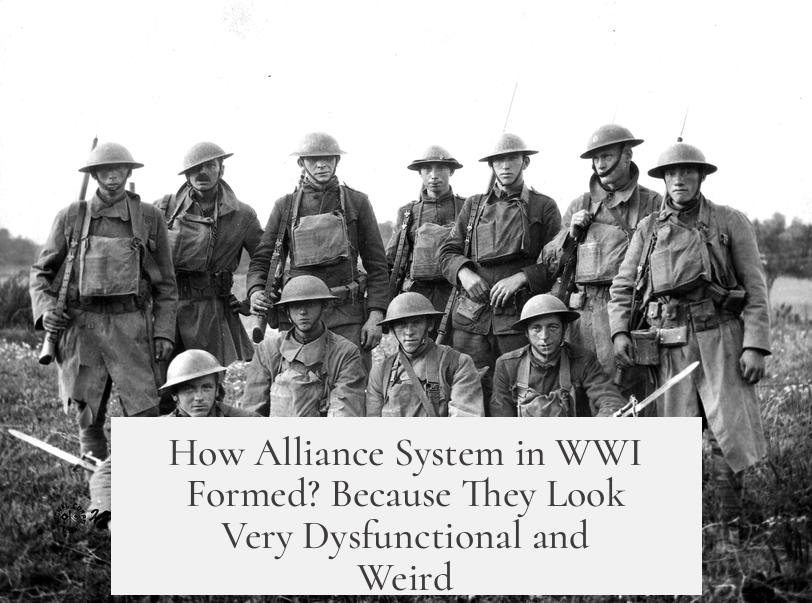
So, what really shaped the alliance system in World War I? Why did it feel so messy and strange? The answer lies in the harsh and pragmatic world of Realpolitik—a “do whatever it takes” style of politics where practical power balance beats friendships or shared ideas every time. The alliances before WWI didn’t form because countries loved each other; they formed because they feared each other.
Imagine being an international politician in early 1900s Europe, juggling shifting lands, rising powers, and social chaos. This formed a tangled web of partnerships that today feels as dysfunctional and weird as a reality TV family reunion.
The Bleeding Roots: Realpolitik and Europe’s Balance of Power
After the Napoleonic Wars rattled Europe, leaders got serious. They gathered at the Congress of Vienna in 1815 to redraw Europe’s political map. Their goal? Prevent one country from bulldozing across the continent like France did under Napoleon. Enter the “balance of power” concept: crafting alliances and borders so no single nation could dominate.
This event wasn’t about friendship either. The major powers (Austria, Prussia, Russia, Britain and France) carved out spheres of influence rather than creating harmonious neighbors. For example, Prussia boosted its borders, Russia took the Duchy of Warsaw, and Austria held Northern Italy under its thumb. These arrangements set the stage for future rivalry and weird alliances.
Revolutions and Wars: Shaking the European Status Quo
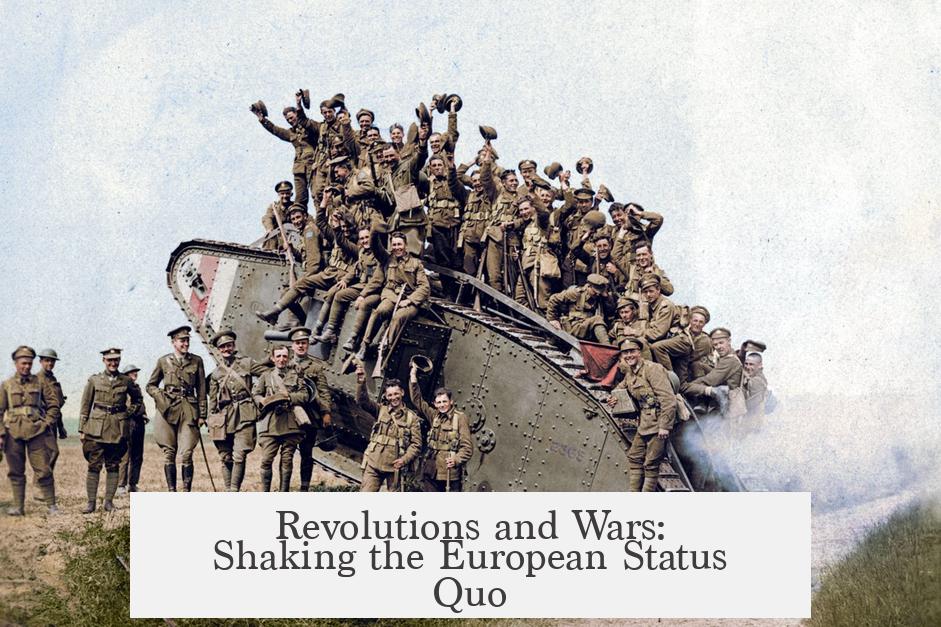
The mid-19th century wasn’t calm. The Revolutions of 1848 spread ideals from the French Revolution—liberty, nationalism, democracy—but mostly disrupted the old order. Monarchies shook but bounced back. Like a mildly embarrassing party guest, the established powers quickly tried to reassert control, even as new nationalist ambitions simmered under the surface.
Then came the Crimean War (1853-1856), a perfect example of how convoluted alliances could get. Russia aimed to expand its influence, but Britain and France stepped in—not exactly to save the Ottomans, but to keep Russia in check. This temporary coalition brilliantly underscores how alliances weren’t always about long-term friendship—often about stopping someone else from gaining too much power.
The Unlikely Rise of Germany and Italy: New Players, New Problems
Then, Europe’s political landscape was rocked by the unifications of Germany and Italy. Both were rapid, ruthless, and ambitious.
- Italy’s Unification: Sardinia-Piedmont, with French help, fought Austria and stitched Italian states into a single kingdom by 1861.
- Germany’s Unification: Prussia waged wars against Denmark, Austria, and France. By 1871, Germany was a new Great Power, thanks to a mix of diplomacy and battlefield success.
These rises upset the careful balance designed earlier. Suddenly, new giants loomed, hungry for influence and respect. Old alliances creaked and shifted as countries scrambled to adjust.
Why Does the WWI Alliance System Appear Dysfunctional and Weird?
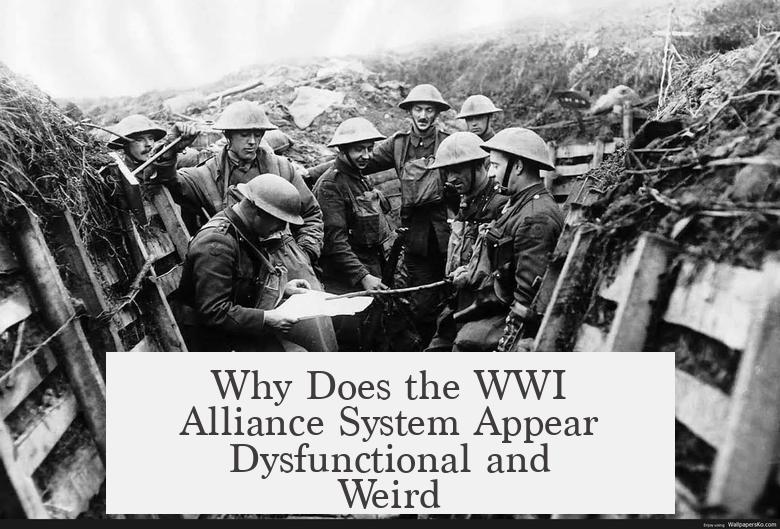
The alliances before WWI weren’t built on trust or friendship. They were born from fear, necessity, and fast-changing power plays. Here’s why they look as dysfunctional as a soap opera script:
- Contradictory Allies: Sometimes historic enemies became allies because it suited current power plays.
- Shifting Loyalties: Alliances were often reactive coalitions to check other nations rather than solid partnerships.
- Pragmatic Over Ideological: Countries joined coalitions for strategic advantage, not shared values or mutual respect.
- Tense Stability: The system created an unstable peace—everyone armed and wary, tensions simmering ready to boil over.
Take the Triple Entente (France, Russia, Britain) and the Triple Alliance (Germany, Austria-Hungary, Italy)—that’s a classic example. Italy joined Germany and Austria-Hungary despite competing interests, and Britain was wary of France and Russia, but joined to contain Germany. It’s like assembling a team where the captain barely trusts some players.
What Can We Learn From This Messy System?
This dysfunctional alliance dance teaches us that alliances born out of fear and necessity can build fragile peace. They may deter conflicts for a while but also increase the risk of catastrophic escalation.
Practical tip? Nations today should strive for alliances based on clarity and shared interests, not just fleeting power checks. History shows that shaky, tangled partnerships often backfire.
To Sum It Up
The WWI alliance system formed through layers of Realpolitik pressure, reshaped borders, revolutions, wars, and unexpected rises of new powers. It wasn’t about buddies sticking together—it was about survival and power balancing. The resulting alliances look dysfunctional and weird because they were exactly that: patchworks of fear-driven partnerships in an unstable Europe. And yes, understanding this can help us appreciate how complex diplomacy really is—plus, why WWI exploded the way it did.
